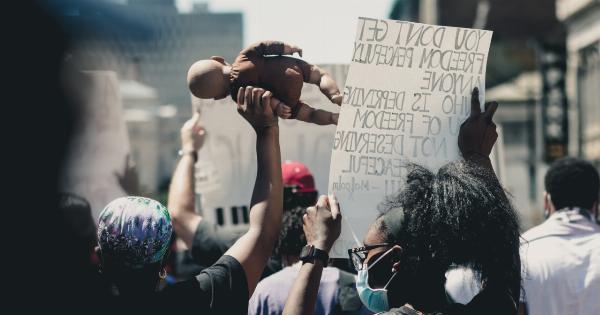Surgery is considered as a treatment option for Chronic Obstructive Pulmonary Disease (COPD) patients who have severe symptoms and do not respond well to other therapies.
The primary goal of surgery is to improve lung function, increase exercise capacity, and enhance the quality of life. However, like any other medical procedure, surgery also has potential risks and complications associated with it.
Risks associated with surgery for COPD patients
There are several risks associated with surgery for COPD patients, which include:.
1. Infection
Infection is a common complication of surgery for COPD patients. The risk of infection increases in patients who have weakened immune systems, which is often the case for COPD patients.
Infections can range from minor skin infections to more severe pneumonia or sepsis. Proper preoperative evaluation and postoperative management can reduce the risk of infection.
2. Postoperative Respiratory Failure
Respiratory failure is a severe complication that can occur after surgery for COPD patients. The risk of postoperative respiratory failure is higher in patients who have severe COPD, and the surgery involves significant lung resection.
Additionally, patients who had respiratory failure or who required mechanical ventilation before undergoing surgery are at higher risk. Respiratory failure can lead to prolonged hospital stays and even death in severe cases.
3. Bleeding
Bleeding is also a potential complication of surgery for COPD patients. COPD patients often have reduced lung function, and therefore, their ability to clear their airways or cough effectively is weak.
This can lead to a buildup of blood in the lungs, which can cause respiratory distress. Proper surgical techniques and postoperative care can reduce the risk of postoperative bleeding.
4. Pneumothorax
Pneumothorax is the collapse of the lung due to the accumulation of air in the pleural cavity. It is a potential complication of surgery for COPD patients.
It most commonly occurs after lung biopsy or other diagnostic procedures, but it can also occur during or after surgery. COPD patients are more prone to pneumothorax due to the increased pressure in the lung caused by their underlying lung disease. Proper surgical techniques and monitoring can reduce the risk of pneumothorax.
5. Venous thromboembolism (VTE)
Venous thromboembolism (VTE) is a blood clot that forms in the veins and can cause blockage of blood flow. It is a potential complication of surgery for COPD patients, as they often have decreased mobility after surgery.
This can lead to blood clots forming in the veins of the legs, which can then travel to the lungs and cause a pulmonary embolism. VTE can be prevented by prophylactic measures such as compression stockings, early mobilization, and anticoagulant therapy.
6. Cardiac complications
COPD patients are at increased risk of developing cardiac complications after surgery. The stress of surgery can lead to an increase in blood pressure and heart rate, which can exacerbate preexisting cardiac conditions.
COPD patients often have comorbidities such as heart disease, which further increases the risk of cardiac complications. Proper preoperative evaluation and management can reduce the risk of cardiac complications.
7. Delayed Wound Healing
Delayed wound healing is a potential complication of surgery for COPD patients. COPD patients often have reduced oxygen levels, which can negatively impact wound healing.
Additionally, smoking, which is a common risk factor for COPD, can also impair wound healing. Proper wound care and management can reduce the risk of delayed wound healing.
8. Anesthesia-related complications
Anesthesia-related complications are a potential risk of surgery for COPD patients. COPD patients are at increased risk of developing respiratory complications after anesthesia due to their underlying lung disease.
Proper preoperative evaluation and management can reduce the risk of anesthesia-related complications.
9. Death
While rare, death is a potential risk of surgery for COPD patients. The risk of death is higher in patients who have advanced stages of COPD and other comorbidities. Proper preoperative evaluation and management can reduce the risk of death.
10. Exacerbation of COPD symptoms
Surgery for COPD patients can exacerbate their pre-existing symptoms, such as coughing and shortness of breath. This can be due to the stress of surgery and the need for mechanical ventilation in the postoperative period.
Proper postoperative care and rehabilitation can reduce the risk of exacerbation of COPD symptoms.
Conclusion
Surgery is a treatment option for COPD patients who have severe symptoms and do not respond well to other therapies. While surgery can improve lung function and quality of life, it also has potential risks and complications associated with it.
Proper preoperative evaluation, management, and postoperative care can reduce the risk of these complications and improve patient outcomes.




























